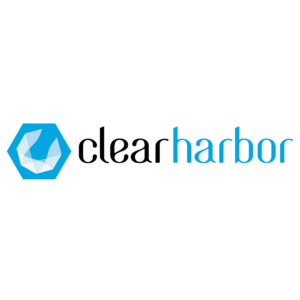Knowing your customer is the golden rule of any strong CX strategy, but focusing solely on customer satisfaction metrics can lead to missed improvement opportunities. By measuring customer and agent effort scores in tandem, CX leaders can tap into a more complete picture.
Let’s look at some strategies to improve both customer and agent effort scores simultaneously, helping brands achieve customer loyalty and agent happiness.
What Are Agent Effort Scores?
The agent effort score measures the ease with which a customer service team can support their customers. When customer service agents have the tools they need to feel empowered in their role, they can generate an invaluable rapport with customers. And when customers feel heard and taken care of, satisfaction and loyalty closely follow. Our research shows that nearly a third of consumers say they would “fall in love” with a brand because of great service.
Why Agent Effort Scores Matter
Agent effort scores have often been overlooked because businesses focus more on the customer’s happiness. But agent effort scores allow businesses to identify and address internal pain points in customer service processes, which, when improved upon, can then help amplify customer satisfaction metrics.
Bringing agent effort scores into the equation helps companies identify disparities that are hindering their agents’ capacity to provide the best customer experience possible.
For example, a high customer effort score coupled with a low agent effort score may suggest agents are overworked or using inefficient tools. In this case, investing in better technology and streamlining processes can lead to improved agent satisfaction, which in turn will positively impact customer satisfaction. With satisfaction comes customer loyalty, as shoppers can rest assured that the agent they connect with will be available and equipped to solve their issues.
On the other hand, a low customer effort score with a high agent effort score might indicate that despite agents’ best efforts, customers still face challenges. This could be a sign to invest in better training and support for agents, or to reevaluate service policies.
How to Bolster Agent Effort Scores
A decline in American workers’ engagement started in late 2021 when remote work took over. As customer service teams become more siloed than ever before, agent engagement is even more crucial for productivity and staying attuned to customers’ needs.
Three ways companies can bolster agent effort scores and activate better problem resolution are:
1. Optimize Internal Processes
Streamline workflows, improve knowledge management systems, and simplify processes to reduce agent effort. This will enable agents to resolve customer issues quickly, all while mitigating any tedious tasks — resulting in a more positive customer experience.
At Gladly, we provide agents with a conversation timeline, which offers a multi-channel perspective of the whole customer journey spanning various channels including phone, email, and chat. This has the dual advantages of giving agents complete context for every customer engagement while helping them to fortify a personal connection powered by prior interactions.
2. Provide Communication Channels and Resources
Implement regular feedback loops for agents, providing them with opportunities to voice their concerns and suggestions. This will help you develop better relationships with agents while generating improved data for training — using employees’ own observations to equip them with the necessary skills, resources, and tools to handle customer inquiries effectively.
Regular sessions and workshops based on feedback can then be used to improve internal processes and tools so that agents can provide better service.
3. Encourage Cross-Functional Collaboration
Break down silos between departments so agents can access the right resources to resolve customer issues. When working as a team, agents can provide more personalized experiences because they understand customer needs outside of their individual knowledge and expertise, allowing them to provide tailored solutions to the individual customer.
Our People Match technology routes customers based on priority, ensuring that the most urgent customer needs are handled first based on their unique challenges, purchase history, or other deciding factors. This approach sets agents up for success while organically increasing agent and customer effort scores.
Reduce Churn, Drive Loyalty
Evaluating agent and customer effort scores together will help you identify areas for improvement, deliver consistently high-quality customer experiences, and reduce churn from shoppers and team members alike. After all, satisfied and engaged employees are more likely to stay with an organization, with 18% to 43% less turnover.
When companies boost their agent effort scores, they also enhance their customer satisfaction metrics. Therefore, loyal customers are a direct result of agent happiness.
Guest blog post written by Gladly.
To learn more about strategies for agent happiness and driving loyalty, visit Gladly’s blog.




























































 TELUS Digital
TELUS Digital ibex delivers innovative BPO, smart digital marketing, online acquisition technology, and end-to-end customer engagement solutions to help companies acquire, engage and retain customers. ibex leverages its diverse global team and industry-leading technology, including its AI-powered ibex Wave iX solutions suite, to drive superior CX for top brands across retail, e-commerce, healthcare, fintech, utilities and logistics.
ibex delivers innovative BPO, smart digital marketing, online acquisition technology, and end-to-end customer engagement solutions to help companies acquire, engage and retain customers. ibex leverages its diverse global team and industry-leading technology, including its AI-powered ibex Wave iX solutions suite, to drive superior CX for top brands across retail, e-commerce, healthcare, fintech, utilities and logistics.






















 Trista Miller
Trista Miller




























